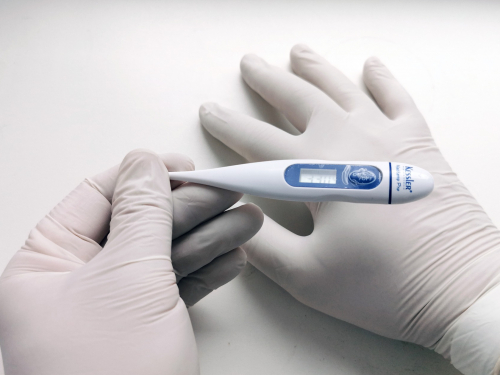To Test or Not to Test: Employer Considerations Amid COVID-19 Pandemic

Q: I am concerned about employees coming to work with a fever—can I test employees’ temperatures before allowing them to work to avoid spreading the coronavirus?
Verrill’s View: Maybe—but there are many factors to consider. Generally, taking an employee’s temperature would be a restricted medical examination, but employers may have more flexibility due to COVID-19’s “pandemic” status. However, if you are considering taking an employee’s temperature as a method to limit exposure among your workforce, it is important to consider the legal implications of doing so and balance them with the benefits.
Temperature Tests and the Americans with Disabilities Act. The Americans with Disabilities Act (ADA) restricts employers’ abilities to generally perform “medical examinations” of employees. Although the ADA does not define exactly what constitutes a “medical examination,” the Equal Employment Opportunity Commission (EEOC) defines “medical examination” as a “procedure or test that seeks information about an individual's physical or mental impairments or health.” The EEOC has taken the position that taking a temperature or other form of “temperature test” is a medical examination under the ADA that may only be performed when the examination is job-related and consistent with business necessity. Generally, a medical examination of an employee is job-related and consistent with business necessity when an employer has a reasonable belief, based on objective evidence, that: 1) an employee’s ability to perform essential job functions will be impaired by a medical condition; or 2) an employee will pose a direct threat due to a medical condition. The reasonable belief “must be based on objective evidence obtained, or reasonably available to the employer, prior to making a disability-related inquiry or requiring a medical examination.” A direct threat is defined as “as significant risk of substantial harm to the health or safety of the individual or others that cannot be eliminated or reduced by reasonable accommodation.” In assessing whether an employee poses a “direct threat,” an employer should consider the duration of the risk, the nature and severity of the potential harm, the likelihood that potential harm will occur, and the imminence of the potential harm.
Temperature Tests During a Pandemic. The EEOC issued guidance in connection with the H1N1 pandemic stating that “if pandemic influenza symptoms become more severe than the seasonal flu or the H1N1 virus . . . or if pandemic influenza becomes widespread in the community as assessed by state or local health authorities or the CDC, then employers may measure employees’ body temperature.” As COVID-19 has been declared a pandemic by the World Health Organization (WHO), the EEOC has pointed to its prior guidance and suggested that taking an employee’s temperature may be permissible in connection with the COVID-19 outbreak.
Other Discrimination Laws. It is important to remember that the ADA serves as a “floor” to the benefits or rights that employees must be afforded. Employers must also comply with individual state disability discrimination laws and be mindful that those laws may have a higher threshold than that set forth under the ADA.
In addition to disability discrimination laws, employers must also be careful to avoid discriminating against employees based on other factors, including age. Any policies related to medical examinations should be applied objectively among the workforce.
Confidentiality under Privacy Laws. Employers must also consider applicable privacy laws related to confidentiality of employee medical information. If an employer decides to perform temperature testing prior to starting work, it could result in a group or line of individuals waiting for their temperature to be taken. If an employee had a fever and was denied access to the workplace, other employees in the line may witness the individual being denied access and conclude that the individual was symptomatic (and could presume the individual had COVID-19). This could be seen as public disclosure of private facts or medical information.
National Labor Relations Act Protections. If an employee or group of employees refuses to submit to testing because of privacy concerns, an argument could be made that these individuals are participating in protected concerted activities under the National Labor Relations Act. If an employer’s policy is that an employee cannot work without submitting to the test, the employer could bar the employee from work (without pay), but the employer probably should not discipline or discharge the individuals involved
Wage and Hour Implications. Employers should also consider wage and hour implications when considering testing temperatures. At locations where individuals need to wait before having their temperatures taken, that time may be compensable waiting time under the FLSA and/or state wage and hour laws.
Occupational Safety and Health Act (OSHA). Testing employees’ temperatures might not be the most efficient way to alleviate OSHA concerns. If there are claims that an employer has not appropriately protected employees from COVID-19 under OSHA standards, there are other less invasive precautions that an employer may want to consider. To that end, OSHA’s guidance on handling a pandemic situation is helpful.
How Helpful is Temperature Measurement? Even if an employer requires employees to have their temperature taken in an effort to decrease spread among employees, it may not effectively diminish the risk of spreading the virus. Even if employees are tested for a fever before work, those who come in contact with the public or who are receiving shipments/deliveries from third parties during the course of the shift may still be at risk of contracting the virus. In addition, if an employee develops a temperature in the middle of the shift, it would go undetected based on pre-shift testing.
Most importantly, employees who have a fever might not have the COVID-19 virus, and employees who have been in contact with COVID-19 might not have a fever. As of the date of this article, the CDC lists the following as symptoms of COVID-19 that may appear 2-14 days after exposure: 1) fever; 2) cough; 3) shortness of breath. The CDC lists the following as “Emergency Warning Signs”: 1) difficulty breathing or shortness of breath; 2) persistent pain or pressure in the chest; 3) new confusion or inability to arouse; and 4) bluishlips or face. Because people can be asymptomatic and/or can have the virus without having a temperature (but having other symptoms), the use of the process of taking an individual’s temperature would be an invasive way to obtain information about one symptom of COVID-19 that may or may not be present when there are other symptoms that can be seen visually with the naked eye (and therefore can be screened in a less invasive manner and/or without performing a medical examination).
Bottom Line: Considering all of these factors, a policy to measure employee’s temperatures carries high risk might not justify the perceived benefits. As concerns about the spread of COVID-19 continue, we recommend employers continue to take additional less-invasive precautions to ensure that potentially affected employees remain out of the workplace such as monitoring visible symptoms, allowing employees to work remotely when possible, and following CDC and EEOC guidelines regarding social distancing and self-quarantine measures.











